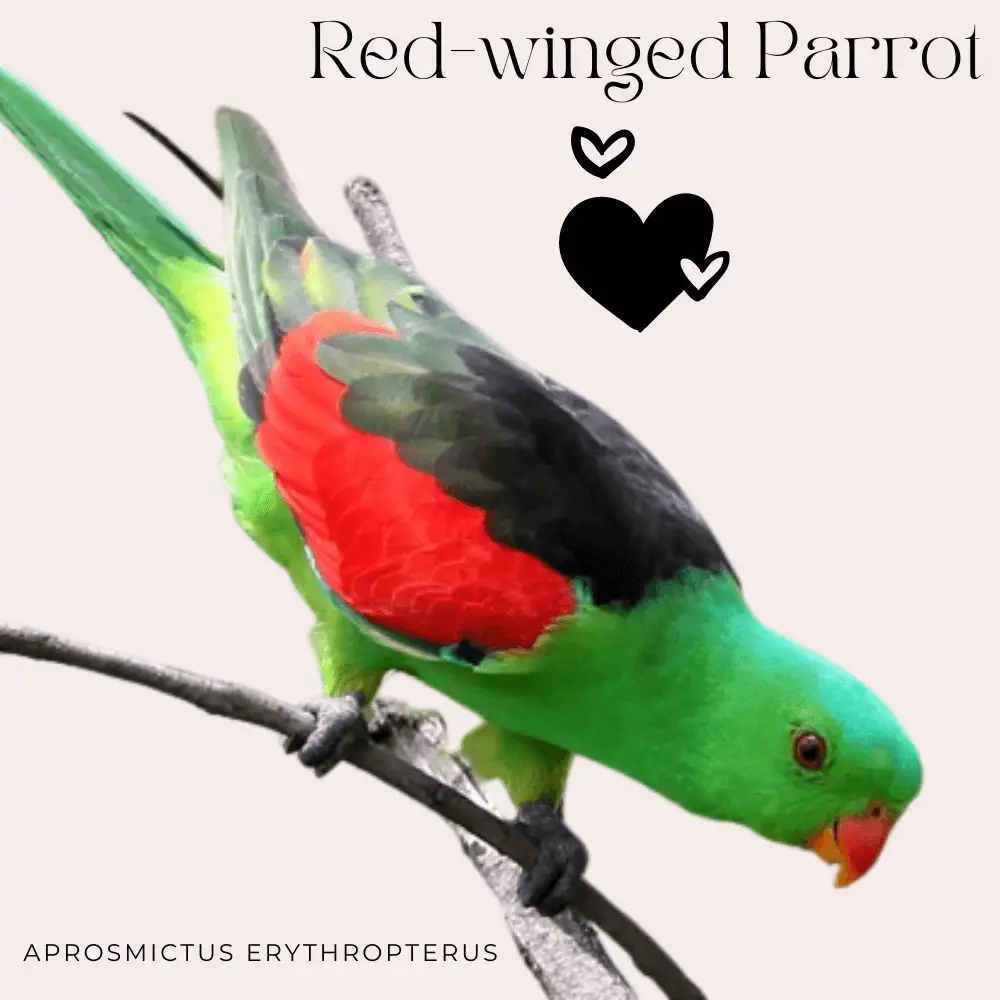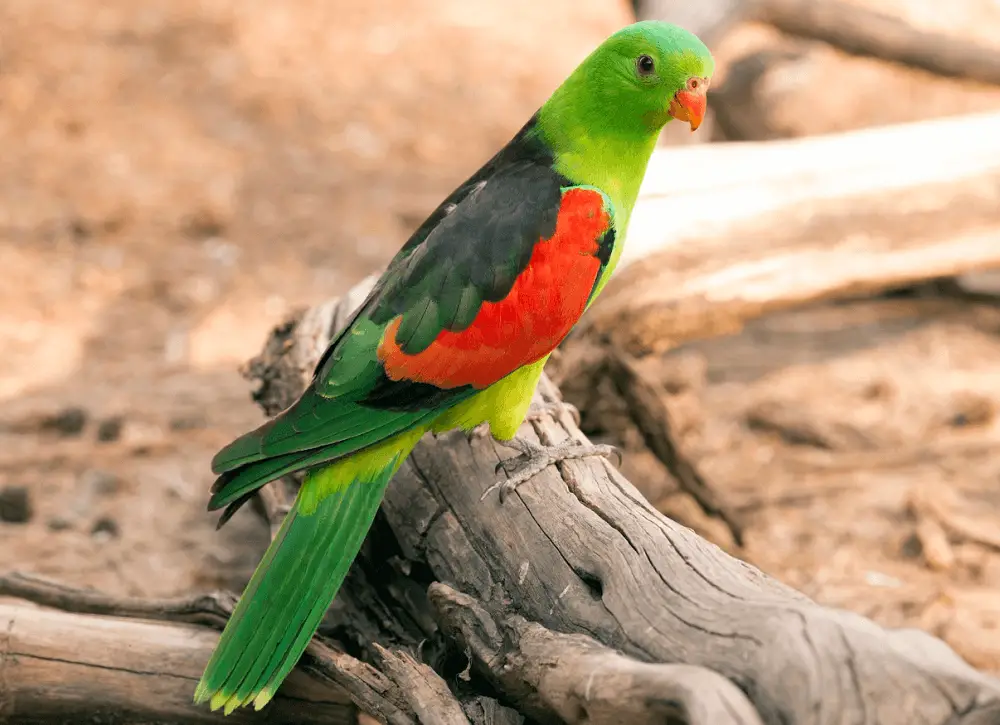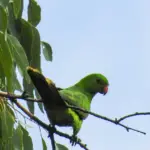
Red-winged Parrot 30–32 cm; 156 g. Green on the head, nape, underparts, and rump; bill orange-red; mantle, upper back and secondaries greenish-black; lesser, median and secondary coverts red; primaries and tail dark green, latter tipped yellow; lower back deep blue.
Female duller, with reduced red in wing and no greenish-black. Immature like a female. Race coccineopterus smaller, with blue wash on the hind crown.
Aprosmictus erythropterus Scientific name definitions
- LC Least Concern
- Names (16)
- Subspecies (2)
Systematics History
Editor’s Note: This article requires further editing work to merge existing content into the appropriate Subspecies sections. Please bear with us while this update takes place.
Forms a species-pair with A. jonquillaceus. Three subspecies were recognized.
Subspecies
SUBSPECIES
Aprosmictus erythropterus coccineopterus Scientific name definitions
Distribution
Trans-Fly lowlands of s New Guinea and n Australia
SUBSPECIES
Aprosmictus erythropterus erythropterus Scientific name definitions
Distribution
EC Australia.
Distribution
Editor’s Note: Additional distribution information for this taxon can be found in the ‘Subspecies’ article above. In the future, we will develop a range-wide distribution article.

Habitat
In Australia open Eucalyptus forest, riverine thickets, Melaleuca woodland, arid Acacia scrubland, Casuarina and Callitris groves in rocky country, and mangroves; in New Guinea subcoastal wooded savanna. Rarely far from water.
Movement
Relatively sedentary in climatically more stable regions, but rather nomadic elsewhere with irregular movements along fringes of range in Australia. Reports of large flocks in New Guinea suggest seasonal movements there.
Diet and Foraging
Preference is shown for seeds of eucalypts, acacias, and hop bush (Dodonea), plus mistletoe Loranthus berries and Grevillea blossoms; fruits of Geijera parviflora, seeds of Cochlospermum fraseri, Amyema preissii, Gahnia, Crotalaria, and Schinus areira also noted, as well as other seeds, nuts, fruits, blossoms, nectar and insects such as lerps Spondyliaspis eucalypti and curculionid larvae. Visits croplands to feed on ripening grain.
Sounds and Vocal Behavior
SOURCE: OzBirdZ
The commonest vocalization of Red-winged Parrot is a repeated shrill rolling disyllabic “curleek”. When perched, also a short rising “krit!” or “quit!”, sometimes doubled or in loose series, as well as various chirpy twittering notes.
Breeding
Aug–Feb generally, but Apr–Jul in NE Australia. Red-winged Parrot Nest high in a hollow limb or deep hole in a tree, often a waterside eucalypt. Eggs 3–5, sometimes 6; incubation, by female only, lasts c. 3 weeks; nestling period c. 5 weeks.
Conservation Status

Conservation status on BirdlifeLC Least Concern
Not globally threatened. CITES II. Generally common, locally abundant, and possibly benefiting from forest clearance in parts of Australia, where sometimes illegally persecuted due to crop depredations.
International trade up to 1987 consisted of several hundred birds annually, but after 1987 numbers doubled, with 1144 exported in 1990, all parrots coming from Indonesia;
at around this time evidence of systematic trapping was encountered, and quotas, although not exceeded, appeared to have no biological basis.




















